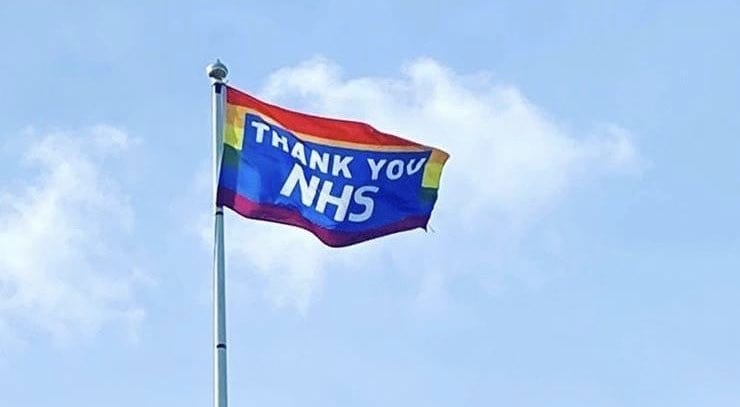Rainbows; synonymous with hope, optimism, and, probably most significantly, gay pride. But more recently, during the coronavirus pandemic, rainbow imagery has been repurposed to show support to the NHS key workers on the UK frontline. For some in the community, this seems to be a striking erasure of LGBTQ+ hardships throughout history.
Since 1978, the vibrant six-colour pattern of the pride flag has been a symbol of unity within the queer community. Developed by gay activist Gilbert Baker, the rainbow flag has been carefully and meticulously designed, and continually updated throughout its forty-two year history, to accurately represent and support the LGBTQ+ community.
Each coloured stripe (red, orange, yellow, green, blue and violet) represents a quality admired by the community, from sex to sunlight. Not only that, but numerous additions to the flag’s composition have shown every effort to accept all queer people. For example, in 2016, the addition of pink represented diversity after Donald Trump’s success in the US election, and black and brown stripes were later incorporated to acknowledge queer people of colour.
‘Why can’t two causes just share the rainbow?’, I hear you ask. The answer is that the history of the LGBTQ+ community, from the 1969 Stonewall riots to the relatively recent legalisation of same-sex marriage, is ingrained into the rainbow flag. To see a pride flag draped over a front window or even to use its corresponding emoji to show support for key workers seems sweet, but ultimately undermines the historical struggles of the queer community.
Read More: What Does The Future Hold For LGBTQ+ Spaces?
Less ambiguous adoptions of the flag, such as the repurposing of the Plymouth Pride double-decker bus into a ‘Thank You NHS’ mobile billboard, have unsurprisingly caused upset and unrest in the LGBTQ+ community. “It just doesn’t sit right with me”, responded one Twitter user after the images were posted by Plymouth Citybus, with others referring to the rebrand as “ill-conceived”, “insensitive” and “insulting”.

This in no way suggests that the NHS is undeserving of the optimism and pride that the rainbow flag represents. Of course, the frontline workers who put their life into their work deserve all of this country’s praise and respect. But it is the direct copy-and-paste attitude towards the rainbow symbol and the implication that the NHS is somehow a more worthy or more valuable cause for the flag that has nevertheless caused discomfort for many LGBTQ+ people.
Furthermore, this literal erasion of queer imagery is potentially damaging for those who rely on the presence of media representation to feel validated and accepted.
For a group with over half of its members experiencing symptoms of depression in the last year, and forty percent recalling instances of discrimination, the LGBTQ+ community is far from finished fighting its battles. So to unwittingly deprive queer people of their flag for the purpose of supporting the NHS may seem like a harmless action, but might actually be removing the only beacon of hope for young queer people in the UK.
Ultimately, the pride flag represents hope, acceptance and love for those who identify as LGBTQ+, and it’s appropriation for the NHS has completely missed the point. While naively an admirable attempt to support one community, it has succeeded in invalidating another; one which has already spent decades being denied a legitimate existence.
As a result, with International Pride Month being celebrated in June and the UK’s final ‘clap for carers’ event at 8pm on the 28th of May, maybe it’s time to put away the banners and return the rainbow to those that fought for it for so many years.
Words by Ellie Whitehall
